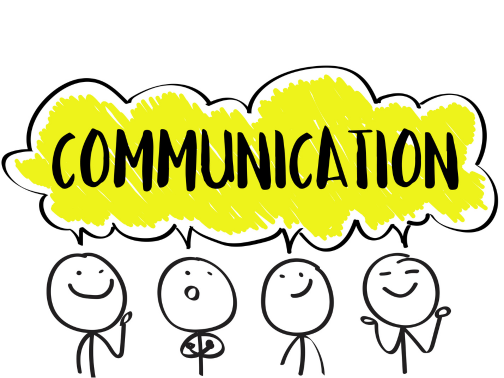
Meet David De’ Ath, co-founder, editor, and writer at Wonderful World English. With his extensive background as an English teacher, David provides valuable insights and practical tips on ESL for students and teachers alike.
Classroom management is the backbone of any well-functioning learning environment.
It ensures students understand what is expected of them and allows the teacher to direct their energies onto learning instead of trying to control students.
A poorly managed class can be a horrible experience for everyone involved, so teachers must understand what they must do to keep on top of this.
Fortunately, teachers can implement some effective strategies to ensure good classroom management.
One popular approach is that of the three C’s.
The three C’s stand for Clarity, Consistency, and Communication. By understanding and focusing on these three fundamentals, teachers can establish a well-structured learning environment that provides an ideal setting for students. Teachers that implement the three C’s effectively are much more able to create a positive classroom culture.
I am an experienced teacher who fully appreciates the importance of good classroom management.
It can be a soul destroyer for teachers who can’t control their students.
In this guide, we will explore the three C’s in more detail, and I hope you can take some inspiration and understanding from them.
We will examine why the three C’s are so important and some practical strategies to help you apply them in your classroom.
Let’s jump in!

The Three C’s of Classroom Management
Below are the three C’s of classroom management:
1. Clarity
The first C of classroom management is clarity.
This means setting clear goals and expectations for your students.
Every student should know what is expected of them, and teachers should communicate this clearly and directly.
Students who know their classroom boundaries will be much more likely to behave and perform well academically.
Setting rules, and lesson objectives, providing clear instructions, and asking questions to ensure comprehension are all important to ensure clarity in the classroom.
Focusing on and maintaining clarity will reduce confusion and misunderstandings and enable students to focus more on their studies.
Check the guide below for some insights into the importance of classroom rules.
Related Article: Why Are Rules Important in a Classroom? – Teacher’s Answer

2. Consistency
The second C of classroom management is consistency.
This means being structured and building a predictable environment where students feel safe and secure.
Teachers should be consistent in their expectations and boundaries and often remind their students of what is expected.
I will review my class rules at the beginning of every lesson, ensuring all students know what I expect from them.
This reminds everyone to act appropriately and contributes to a well-managed classroom.
Teachers should be consistent in how they conduct themselves and interact with students.
This will help boost students’ confidence and encourage them to succeed academically.
Remember that an unpredictable and inconsistent classroom will only breed anxiety and chaos.

3. Communication
And the third of the 3 C’s stands for communication.
Good communication between teachers and students is crucial to building a healthy classroom environment.
This creates a sense of trust and mutual understanding that goes a long way to ensure good classroom management.
Teachers should promote open discussion and involvement, active listening, and provide regular feedback to their students.
Including collaborative activities that require students to communicate with each other is a great way to boost confidence and communication within the classroom.

Benefits of the Three C’s
Now we’ve looked at what the three C’s of classroom management are, let’s delve into their benefits in more detail:
1. Better Learning Environment
One huge benefit of implementing the 3 C’s is that it will contribute towards a much better learning environment.
Students will be more focused, and the chances of bad behavior will be minimized.
A good classroom environment makes the whole teaching and learning process much smoother.
It boosts the comfort and confidence of the students and contributes toward greater academic success.
Creating a positive classroom culture is a wonderful experience for any teacher.
To learn some great tips on how to do this, check out the guide below!
Related Article: How to Build a Positive Classroom Culture – Teacher’s Tips
2. More Student Engagement
Having a class full of active and involved students is much more enjoyable for teachers than having a class of bored and uninterested learners.
By applying the three C’s, teachers will motivate students to engage more in their studies.
This boosts their confidence and allows the teacher to connect with their students on a much deeper level.
The three C’s create a sense of responsibility among students and help them appreciate the importance of respect and education.
3. Behavior Management
As mentioned above, the three C’s will significantly improve students’ behavior within a class.
Teachers can address and prevent disruptive behaviors, contributing to a much better environment for everyone.
Students will be fully aware of what is expected of them and know the consequences of not complying.
This creates a more productive and harmonious culture, which is crucial for both students and teachers.
Aggressive behavior cannot be tolerated in the classroom.
Check the guide below for more information on how to deal with this.
Related Article: How to Manage Aggressive Behavior in the Classroom – Guide

Strategies for Implementing the Three C’s
Now we understand the three C’s and their benefits, let’s look at some practical ways a teacher can apply them to their classroom:
1. Set Clear Expectations
First, teachers should set clear expectations from the very first class.
This means telling the students exactly what is required of them and how the classes will be taught and graded.
This can be done verbally or in writing, where students each sign a code of conduct.
Teachers must communicate this very clearly, and seek feedback from students to ensure they fully understand.
Posters are also a great way to set rules and remind students visually of class expectations.
For some free printable posters, click the link below!
Related Article: Classroom Rules Poster (Free Printables)
2. Reinforce
After expectations have been set and are fully understood, teachers need to reinforce them consistently.
This means revisiting them often and reminding students what the proper code of conduct is in the classroom.
Different classes will require different frequency levels, whether every week or so or at the beginning of every class.
In reinforcing the rules and leading by example, students will be less likely to cause trouble for their teacher.
Teachers should respond to both positive and negative behaviors, rewarding and praising desired behavior and working to minimize undesirable ones.
3. Promote Open Communication
Another effective way to apply the 3 C’s is to promote open communication within the classroom.
This means encouraging open dialogue and active listening to students’ thoughts and concerns.
Students should feel comfortable expressing themselves and want to share their perspectives.
Having regular class discussions, presentations, and feedback sessions will boost students’ confidence and contribute to their development.
Creating a safe and non-judgmental atmosphere will encourage students to communicate and collaborate with their peers.
By applying these strategies, students will not only be more likely to excel in the classroom but also outside of the classroom.

Conclusion
The three C’s of classroom management are Clarity, Consistency, and Communication.
These form the foundation for creating a well-managed learning environment that promotes student engagement and academic success.
Teachers who apply these fundamentals can manage their classes better and achieve more success in their roles.
The three C’s allow students to fully understand what is expected of them and boost productivity and confidence within the classroom.
Following the strategies in this guide can help educators forge a positive classroom culture and improve the learning process for everyone involved.
We hope this has given you some insights into the three C’s and classroom management.
We highly recommend teachers prioritize the three C’s to promote a positive and successful educational journey for all.
Take care on your journey!
Image Attribution: All images licensed via canva.com


